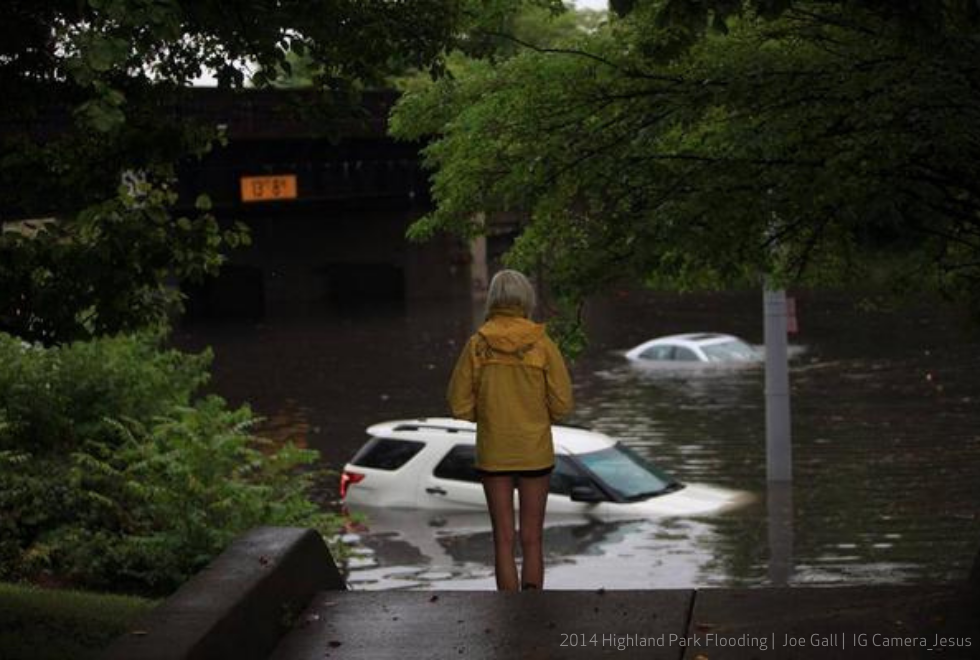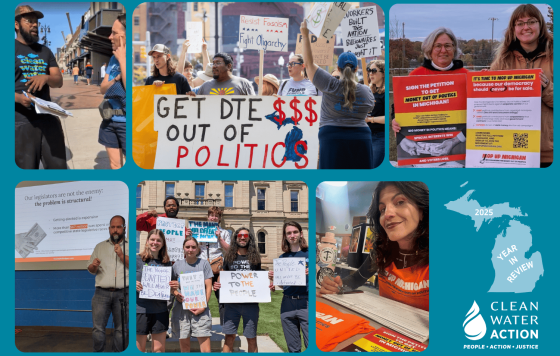
Imagine you get a “thunderstorm warning” on your phone. You light a few candles in case the lights go out, and make sure that you cancel your evening walk. You do everything you can to prepare for what the storm might bring. But, did you know that same storm could contaminate your drinking water?
Right now, the majority of the country has no plan in place for storm related toxic chemical leaks. Improperly managed storage facilities can devastate a community’s drinking water. EPA’s rulemaking on Clean Water Act Hazardous Substance Worst Case Discharge Planning (Worst Case Discharge rule) will require the most at-risk facilities to have a plan in place for leaks caused by natural disasters. EPA should finalize this proposal with the strongest possible requirements. It is essential that EPA hear that this is an issue people want addressed.
What is the Worst Case Discharge Rule
EPA proposes to require chemical storage facilities to analyze how at-risk a community’s water would be if there were a storm that caused a spill. Currently, EPA’s proposal would require over 2,000 facilities to determine if they need to create a “facility response plan.” The facilities in question are those that are half a mile within navigable water, and are storing a large amount of a chemical on EPA’s hazardous substance list. All facilities within these requirements will have to determine if a spill will impact fish and wildlife, public water systems, or cause injury to public receptors. If it is determined that any of these criteria are met, the facility will have to submit a facility response plan to EPA and work with their local water utility to ensure it is fully prepared for large storm events.
Why We Need the Worst Case Discharge Rule
We’ve Needed this a Long Time
Chemical storage facilities being unprepared for storm events has been a blind spot in how we protect water. In 1990, The US Congress amended the Clean Water Act to ensure that storage facilities have plans in place to prevent chemical spills and releases, including during weather events. For over 25 years, EPA did not act. In that time there have been chemical storage leaks that could have been prevented had the requirements been in place. In 2017 Hurricane Harvey caused over 350 chemicals to spill from facilities in Houston, Texas. EPA estimates that there have been 2,489 spill incidents of hazardous substances from 2010-2019. The worst case discharge proposal could have ensured that these facilities had a plan in place when the inevitable storm event happened.
We Need this More Than Ever
One of the clearest indicators that the worst case discharge rule is needed is the lack of clarity on how bad this problem has gotten. Toxic spills are often unreported and of those reported it is unclear which ones impacted the water supply. We may not know how bad the problem is, but we do know that it is getting worse. Climate change will increase the occurrence and severity of storm events, and the worst case discharge rule will ensure that facilities are prepared for the starkest realities of present-day climate change.
Additionally, we are only now starting to understand how only a small amount of toxic chemicals can impact human health. As we’ve become better at synthesizing and creating new materials, our lack of understanding about how those chemicals interact with biological lifeforms has fallen behind. It may not take a large spill to totally shut down a drinking water system.
Due to our country’s history of racial injustice, over a third of storage facilities exist in flood-prone areas, and are close to Black, Latino, and indigenous communities. As usual, these frontline communities will be hit the worst when disaster strikes. It will be imperative to ensure these communities are kept safe and informed from potentially disastrous chemical leaks.
How Can the Worst Case Discharge Rule be Improved?
Requirements are Too Conservative
Much of the groundwork is there to make sure that this regulation has the strongest possible implementation. It is, however, possible EPA was too conservative regarding which facilities should be required to do an analysis. This is especially true regarding the amount of chemicals that must be accounted for. Currently, the hazardous substance threshold is the most conservative possible estimate of what would equate a dangerous amount. Lowering that threshold would open up this regulation to a greater number of potentially dangerous facilities.
The requirement of a half-mile from navigable water is also too conservative. Given the intensity of the storms in question, facilities a full mile from navigable water would better protect communities and waterways.
Last, there is currently no cumulative impact analysis to storage facilities. Meaning that the proposal only accounts for the largest amount of chemical storage. Theoretically a facility could have sulfuric acid, PCBs, and ammonia in the same facility, but none exceed the amounts required by EPA. There is no accounting for the cumulative impact of what a spill would mean for such a facility.
A Need for Greater Transparency
Right now, information on storage facilities is difficult to obtain. Many communities do not even know if such a facility is near their water utility source. When a spill does occur the local water utility should be the first informed as well, and the response plan should already be easily accessible for all actionable stakeholders such as the utility. When people who could be part of mitigating a disaster are shut out from the decision process, it is a recipe for disaster.
What Can You Do?
EPA needs to hear from people like you. They need to hear that the Worst Case Discharge rule is overdue and is desperately needed. We are mobilizing comments to EPA on the proposed proposal until July 26th, 2022. Please check out our action alert and join us in letting EPA know how much people care about protecting communities from chemical releases into their water.
Update: This comment period has closed and the EPA is making their decision. Thank you to all who took action and submitted comments. We will update when a final rule is issued.


